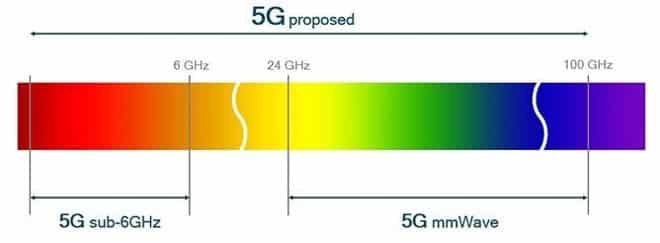Supercharged 5G is on its way
At this point, 5G probably isn’t new to you. The fifth generation mobile network technology launched in Australia last year, and now all three of the country’s major telcos offer 5G plans in select areas.
But current 5G isn’t really 5G at its best – apparently. There’s an even better 5G on its way, crouched on a different spectrum – mmWave – and promising “supercharged” performance that’s 3 to 4 times better than current 5G networks.
While 5G was advertised as being up to 100 times faster than current 4G LTE networks, that isn’t the case right now. A realistic analysis of current 5G speed averages would place it at around twice the speeds of 4G networks.
But 5G continues to roll out throughout the country, its performance gets better. And with mmWave’s supercharging promise, 5G will get closer to the specs we’ve been hearing about for years.
mmWave 5G expected in 2021
Current 5G networks in Australia are offered on the 3.6GHz band. The mmWave 5G will be based on the 26GHz band (24.25-27.5GHz frequency range), which translates into a much better, wider spectrum that allows for better 5G performance.
All 5G is not the same – different bands on the spectrum mean different speeds and performance. src
In early 2021, the Australian Communications and Media Authority (ACMA) will auction off spectrum in the 26GHz band for 5G use. And because of the significant improvements it’ll bring, telcos are already fighting over just how much spectrum is needed.
Both Telstra and Optus have been leading the 5G pack in Australia. They will probably do the same when mmWave spectrum is allocated next year, and they’ve clashed over the limits of that allocation.
Telstra would like a 1GHz limit of the 26GHz spectrum, while Optus argues that an 800MHz limit will be better for competition, ensuring that no one telco can dominate the mmWave 5G space.
But Telstra seems to be ahead, regardless of how the ACMA ends up allocating mmWave spectrum. While Optus hopes to trial mmWave this year as well, its plans aren’t as concrete as Telstra’s, which already has an mmWave 5G-compatible device on the market.
Telstra 5G Wi-Fi Pro is the first and only mmWave-compatible device in Australia
Telstra seems to be en route on its promise to begin consumer trials of its licensed mmWave spectrum. Their Wi-Fi Pro device is a pocket Wi-Fi, and its the only mmWave compatible device on the Australian market right now.
However, the telco’s mmWave trials have not yet begun, so you won’t be able to test it out yet. Telstra says more announcements will follow, and the telco expects trials to start mid year in select cities across Australia.
In the meantime, you can use the Telstra 5G Wi-Fi Pro on regular Telstra 5G networks, as well as 4GX and 4G. The device works like other pocket Wi-Fis, but better and faster. It comes with an Ethernet port for wired connections if you want, and allows up to 30 wireless connections at a time.
How the Telstra 5G Wi-Fi Pro gives an idea of just how fast mmWave 5G can get
The Telstra 5G Wi-Fi Pro clocked download speeds of around 430Mbps on an Ookla Speedtest, and that was on Telstra’s normal 5G network. With predictions of the mmWave spectrum supercharging 5G to around 3 or 4 times its current speeds, you can expect averages of over 1.5Gbps – super fast for a wireless connection.
While most of this is speculation at this point (considering commercial trials haven’t started), they set a pretty realistic bar for what to expect. And with such supercharged 5G speeds, the wireless network technology will become even more of a threat to wired, fixed-line broadband networks.
Final words
mmWave tells us that the real 5G is yet to come. While the wireless network is currently available in several parts of the country, it’s far from its potential.
Prior to launch, we heard about 5G being up to 100 times faster than current 4G networks. However, we only get around twice 4G speeds today. But as the rollout continues, 5G is expected to get even faster and better.
mmWave is a great example of that. While current speeds are pretty fast, the 26GHz band promises to be 3 or 4 times faster than current 5G. But even that doesn’t live up to the initial hypes of the wireless technology, so expect even more upgrades to surpass that improvement as the rollout continues.
